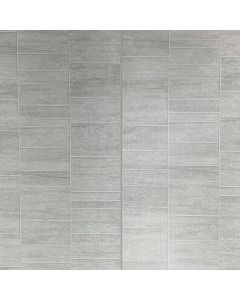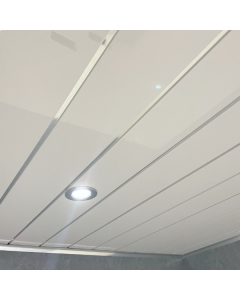Freestanding Versus Built-In Baths
Over the past few years, baths have become much more than a purely functional installation. Now, they can be the entire centrepiece of your bathroom. Freestanding baths in particular are a popular design choice, adding a vintage and unique touch to any bathroom renovation.
Freestanding baths have become so popular that they have replaced built-in baths in many homes. They have an air of luxury associated with them that everyone wants. However, there are pros and cons to both kinds of baths, so it’s best to do your research before making any decisions.
What’s the difference between a freestanding and a built-in bath?
The most prominent difference between these kinds of baths, of course, is in the name: freestanding baths are independent and don’t rely on any surrounding structures, and built-in baths tend to be in an alcove surrounded by three walls.
Freestanding baths are a vintage feature, and they come from Victorian-era soaking tubs. Commonly, they are known as clawfoot baths; the Victorian model was often mounted on four feet. Now they come in a variety of styles, right through from the classic to the hyper-modern. They are often still on feet or mounted on a pedestal – or even flat on the floor.
Built-in bathtubs are more common, and most homes have this kind of bath installed. They are designated to a corner of the bathroom, and usually are surrounded by three walls. Everything but the interior of the bath itself is concealed behind a panel.
Both baths come in a wide range of sizes and dimensions, so you can find deep or shallow versions of either. However, there are some things you must consider before deciding on either.
Practicality
If you’re renovating entirely and you have an abundance of space, you could choose whichever bath your budget will allow for. However, if you are working with a smaller space in which you will need to combine your bath and shower, you will need to take into consideration how frequently you’re going to have baths, versus how often you’ll have showers.
Most of us will have more showers than will have baths, so in this case a built-in bath is actually a lot more practical. Their alcove location means it’s easier to contain water from the shower, and you would simply need a shower screen or curtain to stop your floor from flooding. Just make sure you have waterproof panels as opposed to paint in these areas, such as these subway tiles. Additionally, they have a few ledges that are handy for storing your bath products on for an easy reach and better storage.
It isn’t impossible to install a shower over a freestanding bath, but this can be a bit trickier. You would have to install some sort of shower curtain around it, which arguably takes away the effect of having a freestanding tub.
Additionally, if you’re someone who loves having really hot baths, you need to consider that freestanding tubs cool down a lot quicker. The insulation surrounding a built-in bath will keep the water hotter for longer – although, you could always just run the hot tap to reheat.
Another important thing to note is how strong your bathroom floor is; the weight doesn’t actually vary too much based on the style of the bath, but rather what they are made of. Most modern baths are made of acrylic which is usually light, or cast-iron with a porcelain finish, which is significantly heavier. Be sure to check that your floor can stand the weight of the bath when it’s full and has someone in it.
Space
As mentioned previously, if you’re blessed with a lot of space to work with then your options are essentially endless. Freestanding baths work well for large bathrooms, as they can be placed wherever there is adjacent plumbing. You can place them anywhere you’d like under these circumstances.
Freestanding baths work particularly well in the centre of your bathroom – they are undeniably beautiful and are a really great focal point. However, their nature means that they take up a lot more space, due to the bath itself and any taps installed near it.
Built-in baths take up a lot less space and can also provide better use of the space they occupy with storage underneath and around the ledges. This makes them a lot more practical for a smaller space – more of us live in apartments and flats than ever, and space is a commodity that needs to be considered. However, their nature means you are restricted with where you can place them; built-in baths need to be in a corner, with at least two walls surrounding it.
Cost
In previous years, freestanding baths were a lot more expensive. However, they have become considerably more affordable recently. However, plumbing can be more expensive for these tubs; it’s harder to hide, and lots of pipes could ruin the aesthetic.
Aside from this, though, plumbing for both baths are quite the same. Baths need a water source, a drain, and usually an overflow to prevent flooding in case you leave it running for too long.
Built-in baths are much easier to install, and the plumbing is cheaper as it takes slightly less work. Pricing can vary, but as with freestanding baths declining in cost, the surrounds for built-in baths can be expensive depending on the result you’re hoping to achieve. Additionally, built-in baths work well in cases where extra accessibility is needed, such as for the elderly or the disabled. These can be designed to be walk-in baths, but this does come at an extra cost.
Style over substance
For the most part, freestanding baths and built-in baths are fighting an even match. A lot of the pros and cons are fully dependent on the scale you are renovating, the space you have to work with, and the budget you’re on.
When it comes to style, it’s similar story. A built-in bath can fit in with any theme in your bathroom as it can be panelled to match the walls themselves, such as with these marble wall panels. They aren’t as glamorous, but they function impeccably whilst looking really good – they will look just as fabulous as the walls themselves.
However, when it comes to glamour and luxury, there is nothing as sophisticated as a freestanding bath. They come in a range of styles, shapes and colours, and can either be vintage or modern. Walking into a bathroom with a freestanding bath is like entering your own personal spa.
Both baths can look stylish and high-end; it just depends on how you use them within your theme.
What is a slipper bath?
This is a type of freestanding bath, not attached to any wall or fixture in the bathroom. It is a deep-soaking tub with one end raised, and allows you to relax for hours without losing heat or comfort.


























